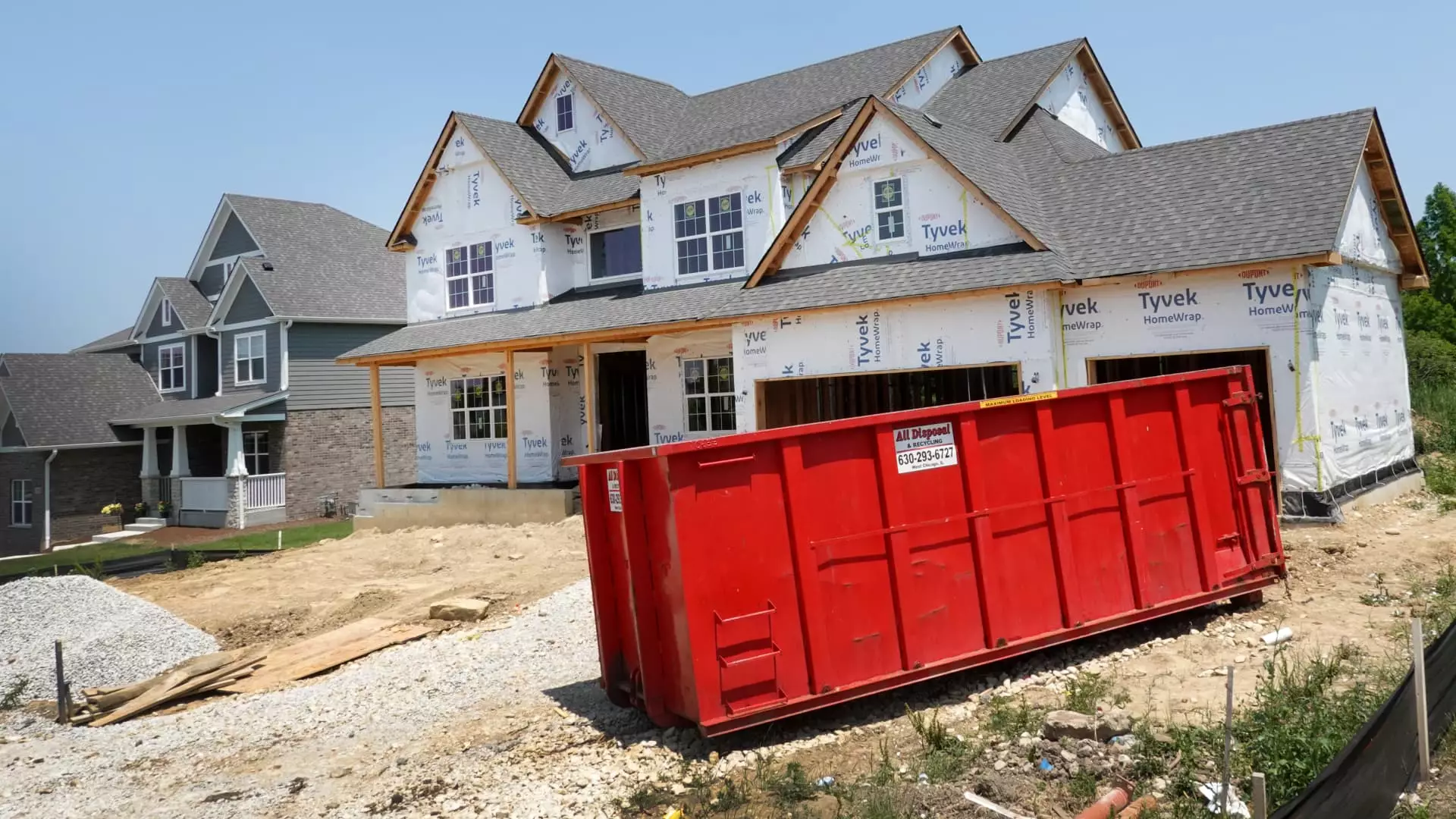The economic landscape for homebuyers in America is increasingly fraught, especially under the influence of President Donald Trump’s tariff policies. The National Association of Home Builders (NAHB) has warned that impending tariffs could add as much as $10,000 to the cost of new homes. This figure isn’t just anecdotal; it represents a seismic shift in the financial responsibilities of aspiring homeowners. Such an increase in costs is not merely a statistic. It paints a dire picture—one where the dream of homeownership becomes ever more elusive for the average American family.
The imposition of tariffs, specifically on materials sourced from Canada and Mexico, poses a multifaceted threat to affordability in the housing market. It serves as a direct tax on builders and consumers alike, as these additional costs are likely to trickle down. As tariffs push up the prices of essential building materials such as lumber and drywall, the logical outcome is that the burden will fall squarely on the shoulders of homebuyers. This phenomenon raises critical questions: Is America really willing to sacrifice housing affordability on the altar of protectionist policies?
The Unintended Consequences for Homebuilders
For builders, the implications of these tariffs extend beyond cost increases; they threaten the very viability of construction firms struggling to adapt to a volatile market. Take D.R. Horton, for instance, where an estimated 20% of lumber is imported from Canada. With the uncertainty that tariffs introduce, homebuilders face an uphill battle—whether it’s renegotiating contracts or restructuring supply chains. Jessica Hansen, the head of investor relations at D.R. Horton, aptly described the situation as a complex dance of navigating inflationary pressures in an environment characterized by diminishing profit margins.
What’s equally concerning is the potential ripple effect on domestic suppliers. Companies like K.B. Home, which pride themselves on sourcing materials locally, may find themselves indirectly affected as competitors scramble to meet new market dynamics. As customer demand for domestic materials increases due to tariffs on imports, the very prices of locally produced materials may rise. This not only complicates the landscape for builders but could also alienate consumers who are hoping for more affordable options.
The Investor’s Dilemma
The presence of tariffs has already rattled investors, as evidenced by the SPDR S&P Homebuilders ETF, which plummeted by more than 22% from its highs just months earlier. With such volatility, how can companies effectively market their offerings to investors without a clear understanding of future costs? The lack of clarity surrounding Trump’s policies further complicates this issue, creating an environment of uncertainty that forces companies to tread cautiously.
At a recent conference, Hansen articulated the challenge eloquently: when faced with soaring costs while simultaneously striving to maintain profit margins, builders will have no choice but to reassess their strategies. The current administration’s evolving stance on trade policies could affect these meetings and decision-making processes down the line. For investors, these dynamics are daunting, which leads to disappointment amid declining confidence in the housing sector.
Future Predictions: A Market in Flux
Looking towards the future, the predictions from economists like Ali Wolf underscore the paradox of rising costs and the prospective labor-shortage challenges that may arise from immigration policies. If a promising homebuilding agenda coupled with less regulation is to advance, it must be dissected against the very real challenges imposed by tariffs and labor availability.
In regions bordering Mexico, Trump’s aggressive immigration posturing could further exacerbate a labor shortage in an already strained market. Builders will face the dual-edged sword of managing pricing pressures while also fighting to maintain a steady labor force. In light of the challenges posed by tariffs, the scale of these potential impacts cannot be understated.
As housing costs surge due to policy decisions, it’s essential to question who truly benefits from these tariffs. The narrative that suggests an economic safeguarding for American industry must be balanced with the reality of diminishing opportunities for the average homebuyer. Are we really prepared to wage an economic war in the hope of fortifying a system that could instead fracture the dreams of many? With the stakes this high, we must critically engage with these policies before they irrevocably reshape the housing landscape.

